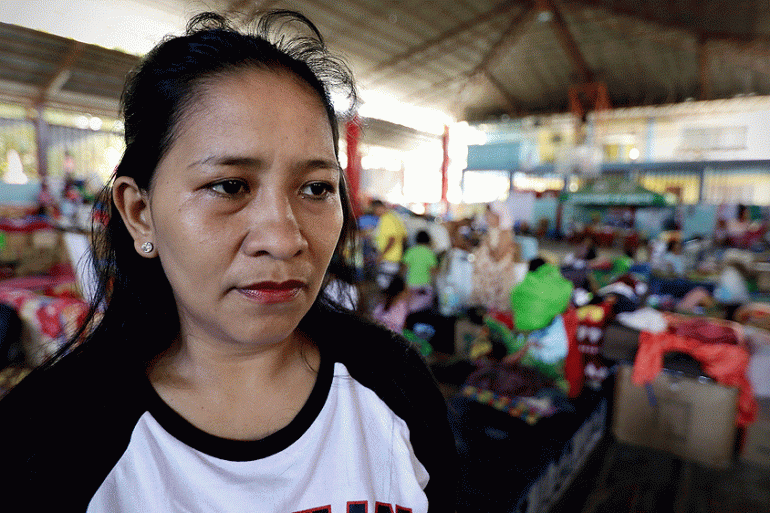‘Mama, I want to go home’: ISIL’s assault on Marawi
As the Philippines government retakes Marawi from ISIL, the fate of the group’s many hostages is becoming clear.

“When I talked to my 13-year-old son, he told me, ‘Mama, I want to go home, I want to go home’.”
This was one of the last times Mherlynda Obedencio heard her son’s voice.
Eugene was captured by ISIL fighters when they launched a deadly assault on the southern Philippines city of Marawi in May.
Mherlynda’s husband and two older children were also among hundreds of civilians taken hostage by armed fighters during a deadly five-month battle that left more than 1,000 people dead.
ISIL’s assault on Marawi caught the Philippines authorities off guard, sparking a fierce fight which left the city in ruins, as this exclusive 101 East documentary shows.
This week, the Philippines government finally declared it had retaken the city, but the fate of many hostages, including Mherlynda’s family, is only just becoming clear.
In the final weeks of the war, the fighters released some hostages. Others escaped or were rescued by the military.
When her family was first captured, Mherlynda, who was working outside Marawi when the attack took place, received regular text messages from her sons.
She said they were used as “human shields” and forced to take up arms.
In one message, they told her: “Mama, every civilian here was put on the front line … We were forced to fight, we were forced to hold the gun.”
But then the text messages stopped coming.
After not hearing from her family in months, Mherlynda finally got news earlier this week.
Her eldest son and daughter had been rescued, but Eugene and her husband are presumed dead.
“He didn’t even know how to fight, how to handle a gun,” she said.
The battle for Marawi was officially declared over in late October after the military killed more than 900 fighters, including the group’s most senior leaders.
But there are fears that fighters could be regrouping and that this is only the beginning of ISIL’s push into Southeast Asia, where it wants to create a caliphate.
The Marawi siege signaled that the group had the means to launch a bloody, sustained attack in the region.
The fighters, an alliance of local groups like the Maute who have pledged allegiance to ISIL, held off the military using tactics more commonly seen in places like Syria and Iraq.
Snipers lurking in abandoned buildings and thousands of hidden improvised explosives impeded attempts to retake the city.
As news spread that fighters were beheading civilians and Philippine forces bombed the city, about 300,000 residents fled.
Mherlynda, who is yet to be reunited with her surviving children, has been staying at one of the temporary shelters set up outside Marawi for evacuees.
It’s not yet clear when they may be able to return to what’s left of their homes.
Government officials estimate it will cost more than $1bn to rebuild the city and that it could take years.
Some locals say that if the government fails to rebuild Marawi, it could become a fertile recruiting ground for the Islamic State of Iraq and the Levant, ISIL (also known as ISIS).
“If the government fails to support us, to rebuild the city, this will produce hundreds of terrorists,” says Agakhan Sharief, a local Muslim leader.
|
|